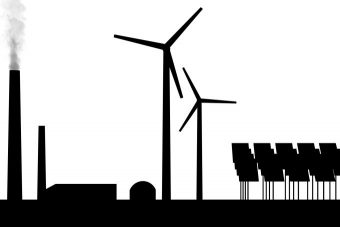
Germany added 2.3 gigawatts of new onshore wind capacity in the first half of 2017. Though it failed to meet the target last year, the Renewable Energy Act set an annual target of installing 2.5 gigawatts (GW) of new solar capacity. Add in a warm autumn and the winter storms Xavier and Herwart, and it is easy to see how renewables provided 44.1% of Germany’s electricity in October.
A press release from Germany Trade and Invest boasts that renewables produced more than 38% overall of Germany’s energy production so far this year. Wind energy produced 82.12 terawatt hours (TWh) as of November 13. Biomass, solar, and hydro followed with 40.10 TWh, 37.5 TWh and 16.84 TWh, respectively.
Though brown coal is still the nation’s leading source, its share of the energy pie is decreasing.
“This is another fantastic return for the time and money that has been put into renewable energy sources. Germany is a global leading market in the area of electricity generation through renewable sources. Further market opportunities come though innovation and cost reduction such as through big data, blockchain technologies and with the coupling of the heat and mobility sector,” said Esther Frey Director of Energy, Environment and Raw Materials at federal economic development agency Germany Trade & Invest.
“We also see strong growth for storage technologies. The number of small home storage systems has grown by 113% per year on average since 2013, while large-scale batteries supporting the electricity grid increased tenfold within that period.”
The big question, of course, is whether Germany will be able to meet its target of at least 80% renewable energy by 2050.
A recent report from Fraunhofer states they need to pick up the pace:
“In 2016, 1.5 GW new PV capacity was installed in Germany [ISE4], which corresponds to nearly 2% of total new PV capacity worldwide. In the German Renewable Energy Act EEG 2014 and 2017 , the federal government set down an annual target of 2.5 GW PV [EE G] . To meet most of or all of Germany’s energy demand with renewables by 2050, ca. 150 – 200 GW PV installed capacity is required by 2050 [ISE5, IWES2]. This means that an average of 4 – 5 GW PV must be installed annually up to 2050. With time, the older PV systems must be replaced. As of now, replacing installations have not played a large role. Once the targeted capacity of 200 GW PV has been reached and assuming an operating life of 30 years, estimates show that 6 – 7 GW PV must be replaced each year. The transformation of the entire power sector to renewables is not a target of the present German federal government. A minimum share of 80% renewables by 2050 is foreseen; and the government sees the necessity of also setting an upper target, or expansion corridor.”
Source: cleantechnica.com



